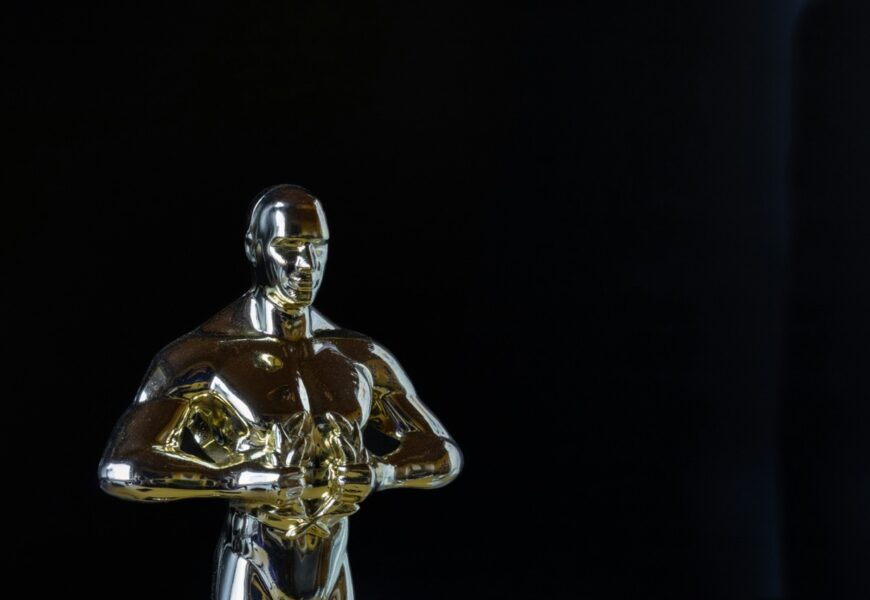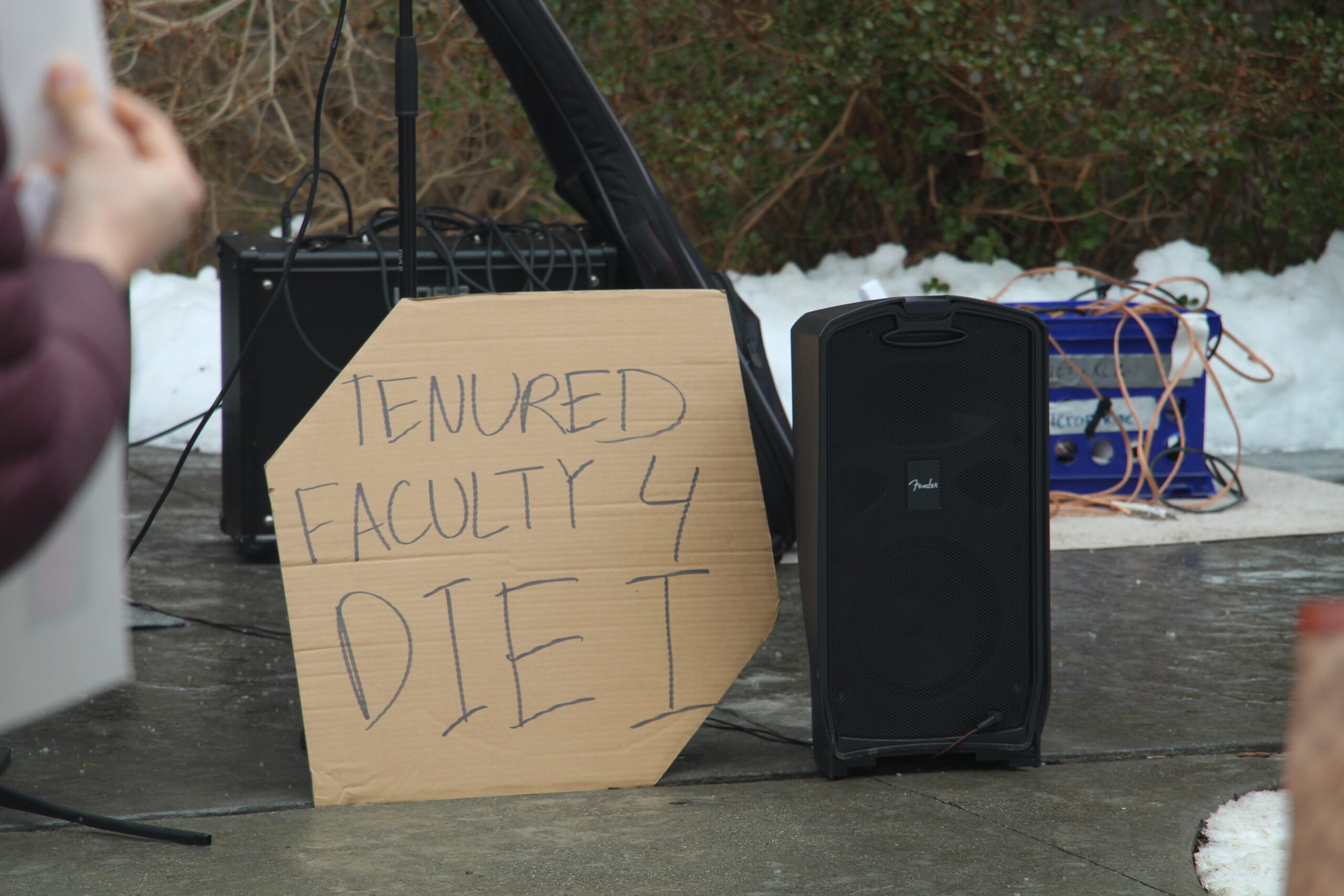Courtesy of Mirko Fabian
The 96th Academy Awards, or more commonly known as the Oscars, were held over spring break on March 10th, 2024. After a fantastic year of films, such as the famous “Barbenheimer” double feature, popular foreign films like Anatomy of a Fall, Zone of Interest, and The Boy and the Heron, and plenty other fan-favorites (Poor Things, The Holdovers, and Killers of the Flower Moon to name a few), it was time for the Academy to decide the winners of various categories. The immense talent of the year meant big competitions for the awards, some winners expected and others surprising (but all well deserved). Here’s a run-through of each category’s winner from that night:
Best Supporting Actress: Da’Vine Joy Randolph
(The Holdovers)
Randolph took home the Oscar for her role as Mary Lamb in The Holdovers, the school’s chef over winter break struggling with the passing of her son, yet finding new family right beside her. Praised for her pure portrayal of all stages of grief, she won not just the Academy Award, but also the Golden Globe, SAG, and BAFTA awards for the same category.
Best Animated Short Film: War Is Over! Inspired by the Music of John & Yoko
(Brad Booker, Dave Mullins)
In a fictional world where the war (WWI specifically) is in fact not over, two soldiers play chess together, communicating through messenger pigeons, but unaware they’re on opposing sides. Soundtracked by the titular song, it conveys John Lennon’s same anti-war messages through human connection, or in this case chess and a pigeon. Its warm animation style yet harrowing war portrayals create a powerful short film which is hopefully slated for an online release soon.
Best Animated Feature: The Boy and the Heron
(Hayao Miyazaki, Toshio Suzuki)
Many suspected Spider-Man: Across the Spider-Verse to win best animated feature, but underestimated the powers of Miyazaki. Studio Ghibli films are some of the most acclaimed animated works, including Howl’s Moving Castle, Kiki’s Delivery Service, and Spirited Away (which won the same Academy Award). Miyazaki’s creativity and imagination shine through never seen before creatures and tales, but all holding similar themes of pacifism and love, and an adoration of Japanese culture. The Boy and the Heron is no different, tackling heavy themes of family and selflessness through a phantasmical coming-of-age tale, what some even consider Miyazaki’s best work.
Best Original Screenplay: Anatomy of a Fall
(Justine Triet, Arthur Harari)
Despite tough competition (The Holdovers, May December, and Past Lives), Anatomy of a Fall came out on top. It is a tense courtroom drama following a woman, Sandra (played by Sandra Hüller, who also acted in the 2023 award-winning film The Zone of Interest), accused of murdering her husband by pushing him off the third floor of their remote chalet, with the only witness being their blind son. With tense court procedures and consultations, Sandra’s dark secrets become exposed and leave the audience to wonder: did she really do it? It’s my favorite watch from the year, and I highly recommend it to anyone looking for a riveting legal film.
Best Adapted Screenplay: American Fiction
(Cord Jefferson)
One of the few awards Oppenheimer didn’t win, American Fiction won the Oscar for Jefferson’s adaptation of the novel Erasure by Percival Everett. The film follows a novelist unable to write a best-seller, until writing a satirical “Black” book, which is mistaken as a serious masterpiece. It’s an almost-direct adaptation of the book, so if you enjoy it be sure to read the book as well!
Best Make-up and Hairstyling: Poor Things
(Nadia Stacey, Mark Coulier, Josh Weston)
From Willem Dafoe’s patch-work face to Emma Stone’s silky long black hair (which in fact, is not a wig), the make-up and hairstyling team went beyond Yorgo Lanthimos’ expectations to bring Victorian surrealism to life. Any film with outstanding prosthetics blows away the Academy, so it’s no shock Poor Things took home the prize. However, their attention to make-up detail is key to note too: watching Bella’s make-up transform with their sense of freedom enhances both her character, and the extravagant visual appeal of the film.
Best Production Design: Poor Things
(Shona Heath, Zsuzsa Mihalek, James Price)
The most colorful film of the year, not just in characters, but all around. The production design crew went above and beyond reverting well-known cities such as Lisbon and Paris to the Victorian era, yet vibrant and lively. Most notably, their sets were masterfully curated to be perfectly encompassed by Yorgo Lanthimos’ fisheye lens, overtly extravagant throughout to convey his theme of surrealism.
Best Costume Design: Poor Things
(Holly Waddington)
Waddington’s costumes in Poor Things are one of a kind, making Victorian-fashion sci-fi and “camp” while still keeping its elegant flair. As the story progresses, Bella Baxter’s costumes echo her freedom, from child-like gowns to bright fairy tale colors with flexible pants (all of course with comically large shoulder ruffles). The costumes also simply add to the fun of the film, looking incredibly ridiculous yet somewhat stylish.
Best International Feature Film: The Zone of Interest
(Jonathan Glazer)
The U.K.’s first international film Oscar win, The Zone of Interest is a heavy Holocaust drama portrayed from the perspective of the Germans, following a Nazi soldiers’ family build their life right beside Auschwitz. With the dramatic contrast constructed between the two lives beside a wall, audiences are left distraught and hollow. This emotionally dissonant depiction of life on the border of Auschwitz made The Zone of Interest one of the most powerful films of the year.
Best Supporting Actor: Robert Downey Jr.
(Oppenheimer)
Downey won his first Oscar for his role as Lewis Strauss, the AEC Chairman who plotted J. Robert Oppenheimer’s downfall. Unlike his traditional roles as Marvel heroes or other protagonists, his role as the unpredictable antagonist in Oppenheimer is equivalently superb: appearing cool and collected until all his emotions boil over, revealing his self-absorption. His phenomenal performance won not just the Oscar, but also a Golden Globe, BAFTA, and SAG award for best supporting actor.
Best Visual Effects: Godzilla Minus One
(Takashi Yamazaki, Kiyoko Shibuya, Masaki Takahashi, and Tatsuji Nojima)
Any film able to create a realistic mega-dinosaur deserves credit, but Godzilla Minus One’s team surpassed expectations. With a long-standing legacy to uphold with a VFX budget of just under $15 million (which sounds like a lot, but isn’t for a film mostly VFX), they were faced with harsh tests. Yamazaki, both the director and head of visual effects, however persevered, keeping production in house, with a limited, yet dedicated team, and a goal-oriented approach of reaching the international audience (to which they did!). Their end result is just fascinating — I highly recommend watching some of their process videos to see the amazing artwork for yourself.
Best Film Editing: Oppenheimer
(Jennifer Lame)
Lane’s award not only goes to editing some of the tensest scenes of the year, but also to making a three hour-long film intriguing the entire time. She spoke about how her first edit of the film was three and a half, struggling to fit all the content without boring the audience. Her end result, however, was perfect: jam-packed through its entirety to create a riveting three cinematic hours.
Best Documentary Short Film: The Last Repair Shop
(Kris Bowers, Ben Proudfoot)
A much more lighthearted film from what we’ve seen the past year, The Last Repair Shop follows the humanity and selflessness of a Los Angeles instrument repair shop, which provides free services to the local public schools. We follow both the workers and the benefitted students, endowing their lives through a shared love for music. It is a heartwarming watch and currently streaming on Disney+ for those interested!
Best Documentary Feature Film: 20 Days in Mariupol
(Mstyslav Chernov, Raney Aronson-Rath, Michelle Mizner)
A first-person account of the horrors in Mariupol, Ukraine amidst the Russian invasion, the film crew of journalists recorded tragedy after tragedy to show the world Russia’s brutality and the journalists’ struggle to survive. It’s a difficult watch, transporting viewers right into Mariupol, but important in educating about the horrors of not just the Russian invasion of Ukraine, but of war and violence overall.
Best Cinematography: Oppenheimer
(Hoyte van Hoytema)
Oppenheimer’s cinematography is one of a kind, and Hoytema fabulously brought Nolan’s vision to life. He is Nolan’s long-time cinematographer, and while continuing with Nolan’s anti-digital trend, they went above and beyond curating the film’s dread and tension. Their usage of color to convey truth and uncertainty, being shot with 75mm IMAX (some of the highest quality film), and clever utilizations of depth create a beautiful visual spectacle, every shot meaningful and enticing.
Best Live Action Short Film: The Wonderful Story of Henry Sugar
(Wes Anderson, Steven Rales)
An adaptation of Roald Dahl’s short story of the same name, Anderson’s film not only includes the whimsical Wes-style, but also lots of fan-favorite actors such as Benedict Cumberbatch, Dev Patel, and Ralph Fiennes. The award is Anderson’s long-awaited first Oscar win, and I’m hoping the first of many more.
Best Sound: The Zone of Interest
(Johnnie Burn, Tarn Willers)
One of the biggest shockers of the night, The Zone of Interest beat Oppenheimer for best sound. Many suspected Oppenheimer to win given its theater shaking audio production, but The Zone of Interest is not much different (in fact, its mixing and production is better). A majority of the film’s power comes from its sound: gunshots and screams of death conflictingly overlaying scenes of gardens and family. Burn and Willers impeccable sound layering curated these ghastly moments, showcasing the true power of sound in cinema.
Best Original Score: Oppenheimer
(Ludwig Göransson)
Göransson’s score for Oppenheimer is a masterpiece, perfectly articulating the emotion and aura of the scenes — it’s as if it’s another actor in the film itself. It is no surprise coming from Göransson, who has been building quite the track record: his recent work on The Mandalorian, the Black Panther films, and as a record producer for Childish Gambino and other famous artists. Having music from almost start to finish, each song is flawlessly coordinated with scenes, enough so you can go back through the album and remember exactly what happened in the film with each musical cue. Beyond the film, it’s also just a beautiful composition (and great study music!).
Best Original Song: Barbie: “What Was I Made For?”
(Billie Eilish, FINNEAS)
The tearjerker from the end of Barbie took the award home, being Eilish and FINNEAS’ second academy award (the first for their song in the 2021 James Bond film, No Time to Die). The song’s lyrics questioning the relationship between self-worth and superficial social purpose hit home for many, especially young women and femmes, across the globe following the film’s release this past summer.
Best Actor: Cillian Murphy
(Oppenheimer)
Playing a historical figure is no easy feat, especially the father of the atomic bomb, J. Robert Oppenheimer. Yet Murphy’s multi-layered portrayal, from a stoic, commanding leader to a merciful, hunched-over wreck, rebirths Oppenheimer’s story. His tense performance reflects onto the audience as we are granted the opportunity to see through his thousand-yard stare and experience his inner turmoil surrounding the development of the atomic bomb. His acting vigor extended off-screen, as he taught himself over 30,000 words in Dutch in just three days! His method acting is applaudable, giving one of the best lead performances in cinema within the past decade.
Best Director: Christopher Nolan
(Oppenheimer)
Nolan’s long-awaited best director Academy Award was finally delivered — in fact, his first major directing award for any of his films. Oppenheimer is some of his best work yet, continuing his traditional style using high quality IMAX film cameras and solely practical effects (yes, all those explosions were real). Keeping an audience locked in for three hours, conveying not just the tragedy of Oppenheimer’s life but the unfinished horror of a nuclear apocalypse, his film is not just entertaining, but an important, eye-opening watch, all thanks to Nolan’s mastery.
Best Actress: Emma Stone
(Poor Things)
Given Lily Gladstone’s previous wins for best actress in the Golden Globes and SAG awards, many predicted her to win the Oscar too, especially with how they applauded her for being the first Native American actress nominated for the award. But when they read the name Emma Stone, even she, herself, was surprised! Her second Oscar for best actress (the first for La La Land), and for her incredible performance showcasing her acting diversity from her last award, from aspiring-actress, romantic Mia to Frankenstein-esque, “adult-infant” Bella Baxter. Her dry-humor delivery and unorthodox actions were one of a kind, winning her best actress.
Best Picture: Oppenheimer
(Christopher Nolan, Emma Thomas, Charles Roven)
It is no surprise Oppenheimer took home best picture given the Oppie-sweep, but what is surprising is it’s Nolan’s first best picture win. Having an insane filmography, including Interstellar, The Dark Knight trilogy, and many other A-list films, the Oscar has been long overdue, but possibly for his best film yet. With captivating cinematography, rich acting, and harrowing messages, the film is exploding with talent, and merited praise. It is one of the most immersive, mind-blowing films of the year, deserving of not just the Oscar, but being Nolan’s best moments in his career yet.










